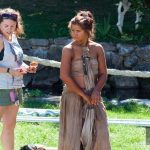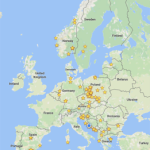We continue meeting the people of Split today with Filipa Marušić – a young, vibrant, busy, and important part of the Split community. We think you’ll enjoy this one. Here is Filipa’s story.
1. First off, tell us about you.
I was born and raised in Split – same as my younger brother and sister. Both of my parents come from the Dalmatia region too – my dad is from the Omiš Riviera, from the picturesque coastal town Marusici where I spent most of my summers swimming in the crystal clear sea and where we have our own vineyard. My mum comes from Imotski which was my inspiration for a lot of stuff I do. I went to school in Split and graduated from the Faculty of Economics. During my education, I always had some kind of extracurricular activity – this habit kind of stayed with me until now. I went on two student exchanges and they turned out to be really cool experiences. First I went to cold Stockholm for 6 months where I had several courses to pass. I also just graduated with my Master thesis and I went to work as a marketing assistant in London for 3 months. If I wasn’t living in Split, both Stockholm and London would be my top choices for a place to live. Both of these experiences were quite fun and turned out to be something that was a better education than the formal one I received – travelling is great but spending some time in a completely new country is even better. Finally, these experiences turned out to be something that contributed to the stuff I do now.
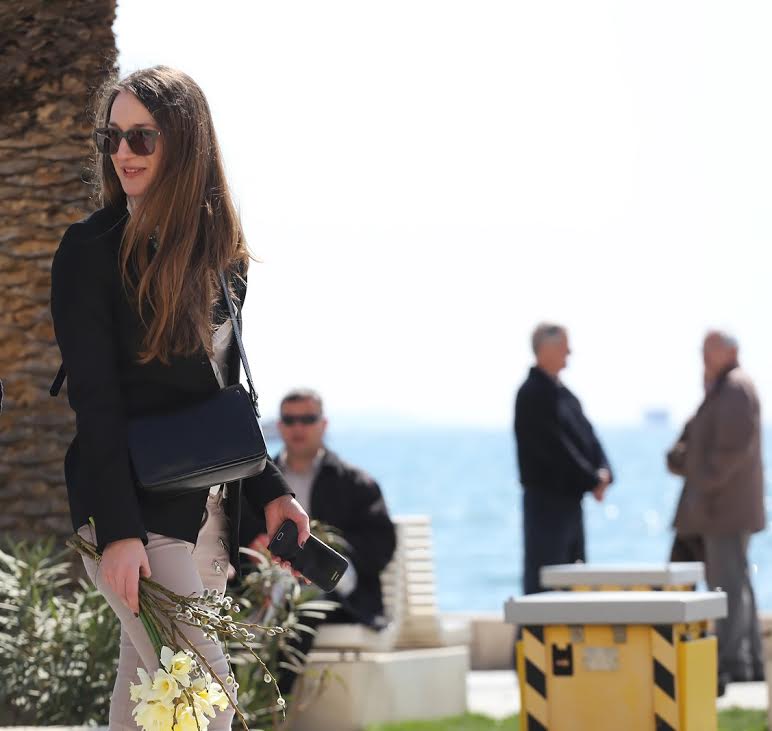
2. You work with a tourist agency here in Split. What is that like and what kind of tours are you involved with?
Yes, that’s right. I started my own tourist agency business 2,5 years ago when I was still a student. It first started as an idea for developing tourism in Inland Dalmatia with a wine tasting tour in Imotski in a unique 130-year-old wine cellar owned by my family, and it soon became something I wanted to do for a living. The fact that I love to travel and that most of the trips I planned on my own was an additional inspiration for making the tours people who visit Split might love. Also, I worked as a tour guide for several local agencies and with this job I visited almost every single part of Croatia and worked on different organizational and logistical issues important for working in tourism. My main idea when starting this business was to offer unique tours and experiences to people who come to Split. Split is booming as a tourist destination and I was aware the competition is huge but the concept of small custom made tours based on local flavors started to pick up with guests. Also, I noticed tourism two years ago was still like something that just happened to Split and not something that’s sustainably done. Sometimes I felt tourist are just like numbers for some businesses. In addition to that, I noticed that most of the tours offered were mainstream tours to national parks and the islands. Don’t get me wrong, if I was a tourist in Split, I would definitely go to see all the major sights in Split and around, but I was sure people wanted to do and see something different.
Anyway, I decided to prepare everything for the launch of Sol Travel, and that was the fun part – working on the notorious Croatian paperwork and special preconditions needed for a tourist agency (it takes time but it’s doable!!), preparing everything from the website to logo and design (special shout out to all my friends who helped me with this – especially my friends who are working with photography and design) – more or less it took me several months to set everything up and my first tours and guests began in the spring of 2015.
My main business motto is to offer guests great service, unique experiences and bring them even closer to local traditions and history. That’s why along with wine tasting in Imotski, I offer several food and wine tours in the Split region. I also do some mainstream tours but I mostly focus on small groups, custom made tours and tailor the tour according to the needs of guests. Some of the tours guests love are the wine tastings on Šolta and Brač (in small towns inland from the islands), wine tasting in Imotski and Split, culinary classes in Imotski and rakija and beer tasting tours. Now, after 2 years I can say I have returning guests and a range of partners and associates who inspire me to work on additional ideas and make the current tours even better.
3. Tell us more about this wine tasting tour in Imotski….in a 130-year-old cellar owned by your family!
This wine cellar, owned by my family, was one of the reasons I started my own business in tourism in the first place. Three years ago, this idea about offering tours in a then recently restored wine cellar seemed like a good idea to start my tours and bring more people to Inland Dalmatia. What’s special about this wine cellar is the fact it is located in a house in the centre of Imotski and it was built in the end of the 19th century. The house is in pretty good condition and it recently got listed as cultural heritage of Croatia. The cellar, 4 meters below the ground, was restored with the help of one local winemaker whose wines can be bought there. Everyone who has visited the cellar has been stunned. The venue can have approximately 120 people and everybody who has done the wine tasting has loved the wines and the whole experience. Tours that include a visit to the wine cellar also contribute to the sustainable development of the Imotski region. The only thing that I find as an obstacle is the fact that Inland Dalmatia is still not perceived as a legit tourist destination. I know there is a lot of stuff in the media about new records in visits and different projects (many of which are great) but I still think the average tourist won’t be really interested in visiting, for example, Imotski or Sinj because they have no idea about the heritage and nature that can be found there. This needs to be changed by constant efforts in promoting these regions and making the range of activities even bigger. Every time I take guests on this wine tasting tour, they are surprised by the fact that there is any wine in the region. This tour is something people love but I feel it would be even better if people knew about Imotski even before they come to my website and inquire about the tours. When I first started I was quite eager to change this, but now I’m aware this is a process which, with time, will get Imotski to be one of the top destinations for people who come and visit Croatia.
4. Are you involved in any other projects outside of Sol Travel?
Yes, since starting up with Sol Travel work started to add up and I’m happy to say I have a great group of colleagues who help me with Sol Travel from drivers to tour guides without which I wouldn’t be able to do everything I do.
My job besides being the owner of Sol Travel is the position of front desk manager in Hotel Peristil, a small boutique hotel in city center, where I deal with sales, marketing, front desk, guests and everything that needs to get done. The hotel has 12 rooms and my job is to manage reservations and sales and be there for guests and cater for their needs.
In addition to that, I’m part time contributor to Total Croatia News and currently, I’m writing series of articles about UNESCO intangible heritage of Croatia. Writing for TCN is a fun task with which I always learn something new about Croatian heritage and at the same time share it with people who read the articles. This job came to be by chance as I interviewed Paul on the Total project 4 years ago when I was working as a student journalist for PR Glas web magazine and then later I started to write my own blogs.
Before I worked on managing social media and internet marketing campaigns for several businesses but now I just focus on these three.
In my spare time, I love to be part of different workshops, conferences, seminars, and lectures – as a contributor or listener – I feel with each day we learn and you can always improve something you know. Also when I feel inspired enough I start some kind of art project – like jewelry making I did a few years ago.
As you can see I’m quite busy and I luckily never spent too much time in search for a job because I was working on different projects and part-time jobs even before graduating. I need to say I was living abroad and I saw a lot of opportunities for educated people there, but I felt it was better to stay in Croatia and contribute to my local community. I know things might be better in Croatia, and young people are demotivated with low salaries and long searches for a job, but I think the quality of life in Croatia, especially in towns like Split, is much better than abroad.
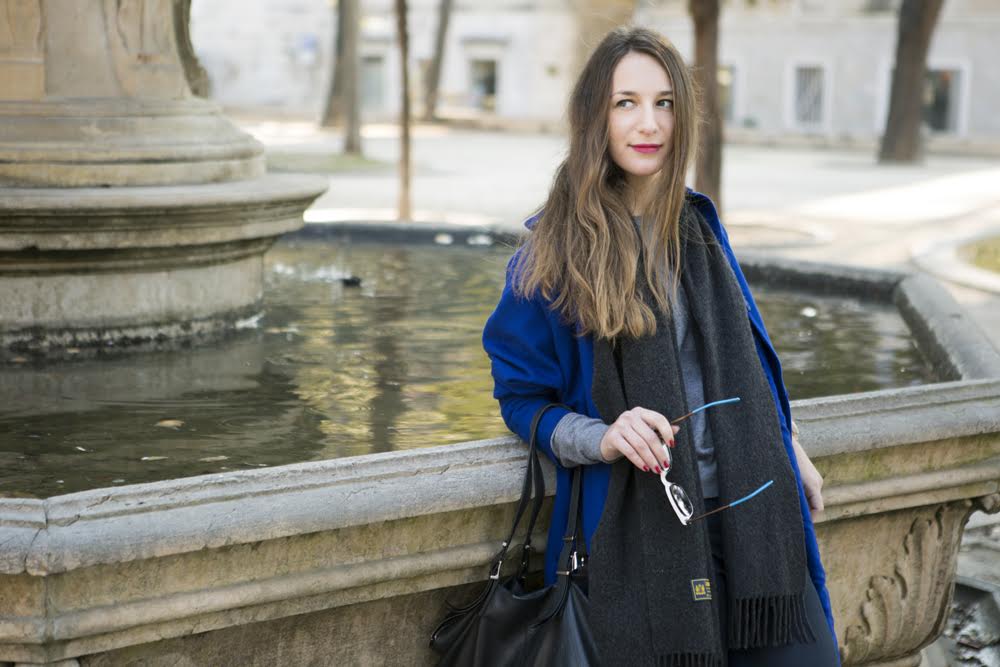
5. What are some of your favorite places in Split and why?
Split has plenty of places I love but here are my favorites:
I love city centre – area locally called Get – it does get quite busy during the summer but has such a great vibe and I can tell why people love it. My favorite is also the south side of Marjan hill and area around Vidilica viewpoint – I need to admit I’m a bit lazy to be a regular jogger on Marjan but I just love this area. For favorite bars, I would definitely say 4coffee and StRiva for coffee, Sanctuary for craft cocktails, Leopold’s delicatessen and To je To for craft beer, Jazzbina, Fabrique and Charlies for pre-party drinks and Plan B for pub quizzes. About this, I need to say pub quizzes became a thing in Split – there are more and more bars that organize pub quiz nights – I participate with my team The Haters (it’s an inside joke, we don’t hate).
For restaurants, I can recommend Matoni for cozy atmosphere and great food, Bokeria and O’zlata for a nice dinner, Galerija food and Corto Maltese for cool dishes – each has their own thing and the food is good. I can also recommend Zinfandel and Uje oil bar for wine and bites and Villa Spiza for a unique experience.
6. What are some of your favorite places to explore outside of Split? Any secret places you would recommend to both tourists and locals alike?
My favorites for exploring outside Split are definitely Klis fortress and Trogir. For Klis fortress I’m happy to say this isn’t as secret of a place as before – Game of Thrones did a lot for promoting this historical fortress and bringing people there. I would say both locals and tourists should go to Trogir – locals often overlook it because it’s common to have huge traffic jams (something that won’t change so soon apparently) and tourists should see this UNESCO World heritage town. One more place is Salona – an ancient Roman town that should be much better presented both to locals and tourists. One more thing I can recommend is hiking on Mosor or even star gazing on the same mount – if the weather is nice enough both are great experiences.
For places in Split, I’m not sure if a lot of people know about the great coworking space called WIP on Žnjan – it’s a nice and quiet place for work and just a few minutes from the beach.
7. Split has obviously changed a lot over the last few years. What have you seen that has changed the most? Is Split changing for the better?
I would say that the number of apartments for seasonal rent has increased uncontrollably and I’m not sure I would say this changed for the better – of course, we get more and more guests each year but I think Split should have a better strategy when planning its tourism offer – we still sometimes lack a clear direction of where are we exactly going. I feel like all this tourism we talk about in Split is something that happened by chance and not by sustainable planning. Split recently made a strategy for tourism and it’s a great initiative, but I think we need to do more. Of course, some things cannot be done by individuals or not even by the municipality of Split. I do hope several huge tourism investments related to hotels will change this situation as I think we cannot consider Split serious tourist destination without having a larger number of hotel beds. Another thing that should be improved is having a better connection with other European towns. I’m embarrassed to say Split has approx. 8 inbound and outbound flights during winter and half of them are to Zagreb and other airports in Croatia – we can’t be a city break destination if we don’t have affordable and frequent flights. In order to get this, we need to be a city that is a place of interest for different airlines and this interest is not only during the summer. I think Split and Split-Dalmatia county have a lot of things to offer in the off-season too. But it’s not only to offer the things we have by chance like good weather, a great promenade, and nice people. We should do much more on the organized planning of events in the low season – Advent is a great example but then Advent lasts for a month and then I sometimes feel like a lost tourist when I walk around the city centre and 90% of restaurants are closed or they work just one shift. The issue can be traced back to locals who got used to this easy money when renting out apartments and I guess they decide to live like hermits the rest of the year – this is alright and everything but on a level of sustainable planning for a city and city content I think there should be more things on the plate. Of course, there are positive and good changes such as a large choice of restaurants, bars, and events during summer and if people are encouraged to visit all of these places during winter it would be even better.
8. Here is a two-part question: Since you work with a tourist agency, what is one thing you find tourists most want to know about Split or check off their “Split list”? Since you work with culinary tours, how do tourists find the Dalmatian and Croatian cuisine?
Most tourists want to see Diocletian’s palace and that’s the main thing they want to do. They want to know who was Diocletian, what brought him here, what’s the deal with it. They also want to know the easiest way of reaching the islands, and especially Brač, Hvar, and Vis. I think they should definitely explore Diocletian’s palace and visit a few museums. I also think they should visit something outside Split – either an island or a heritage site nearby like Klis or Trogir.
For the food, tourists say they love the freshness of ingredients (food bought on Pazar green market and ribarnica fish market) and the richness of flavor when it comes to seasonal fruit and some local dishes. They do notice a lack of international cuisines, but this is slowly changing. I also feel we lack more diverse restaurants but I can tell that this Mediterranean diet inspired cuisine that we have in most of the restaurants is definitely a special experience for them. On the culinary tour I do, guests showed that they just love the typical Dalmatianpeka and they are excited to be part of such a tour. On this specific tour they usually make traditional “uštipci” and veal “peka – under the bell” and they love the process of prepping the food they are going to eat in few hours. Also, they are excited to see a “komin” where food is baked. As part of the tour they have an optional wine tasting in the already mentioned wine cellar so the guests first have a few glasses of wine and then they learn the basics of Croatian cuisine – this turned out to be a great combination.
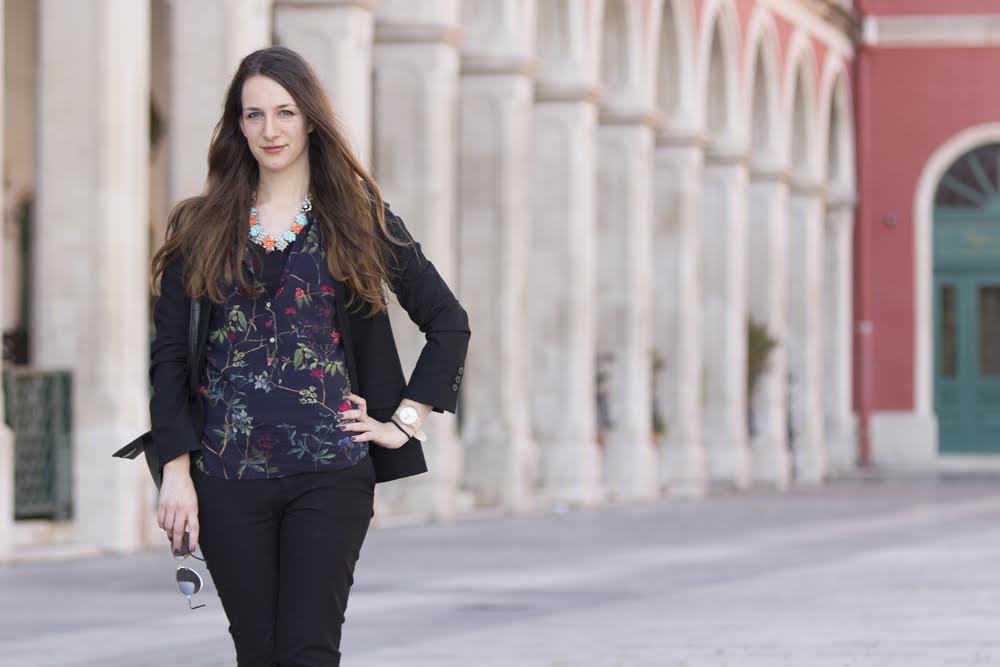
9. What are some of the places in Split you think tourists miss and should see or do?
I think they often overlook the Marjan hill area – they usually get to Vidilica or maybe visit Mestrovic Gallery and that’s it. I think they should try going all the way towards the Kašjuni area and the south slopes of Marjan – it’s great place for different activities or just great photo opportunities. Also, they sometimes skip the Varoš area, except in the cases when their accommodation is there. I think they should combine Varoš and Marjan as a great route for exploring Split a bit off the beaten path. I’m not sure if tourists visit any museums except the Palace Basements – the Basements are great and one of the main places to see but I think they should visit the Ethnographic museum and the Fine Arts Gallery too. Of course, Split museums could do more when presenting their exhibits but the tourists might visit these places anyway as most of them are in the city centre.
10. How would you describe Split in 3 words?
Place to be.


